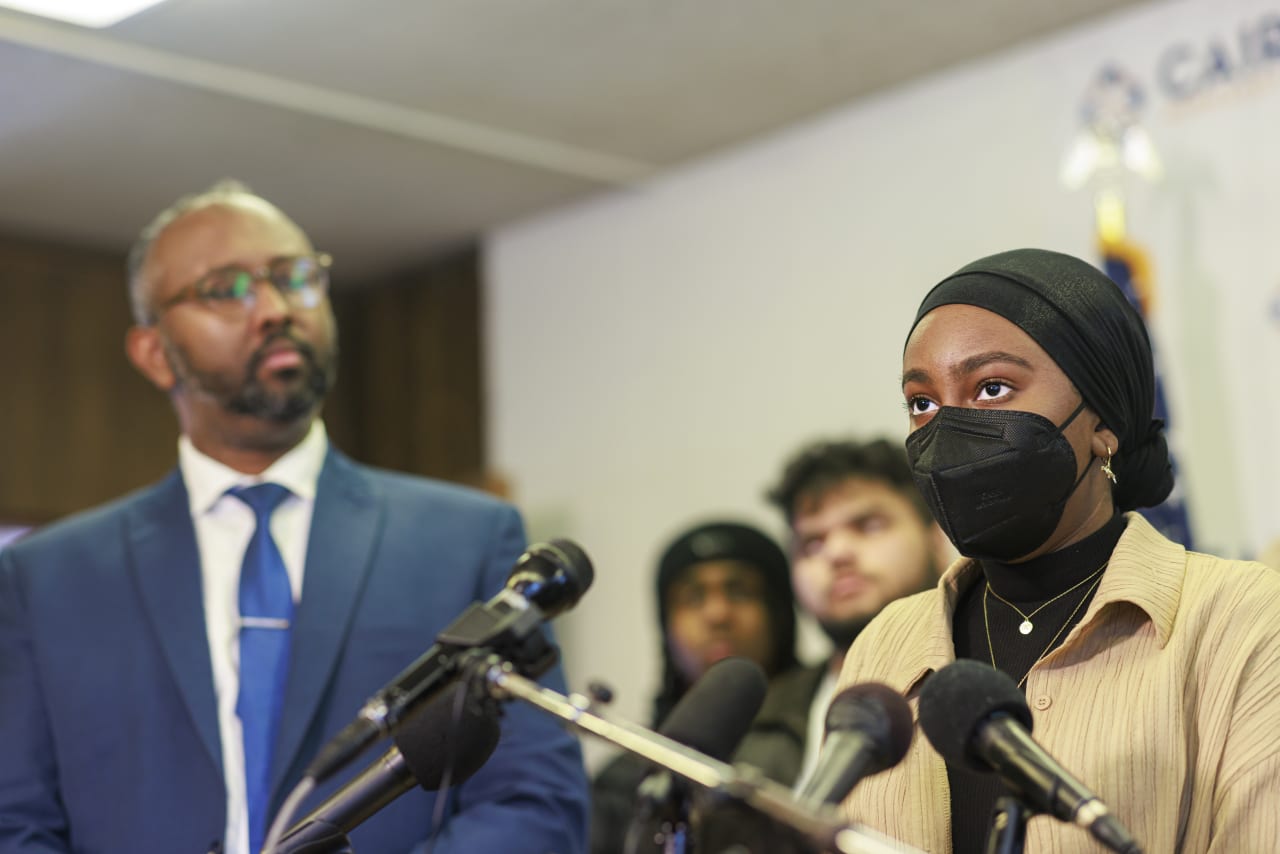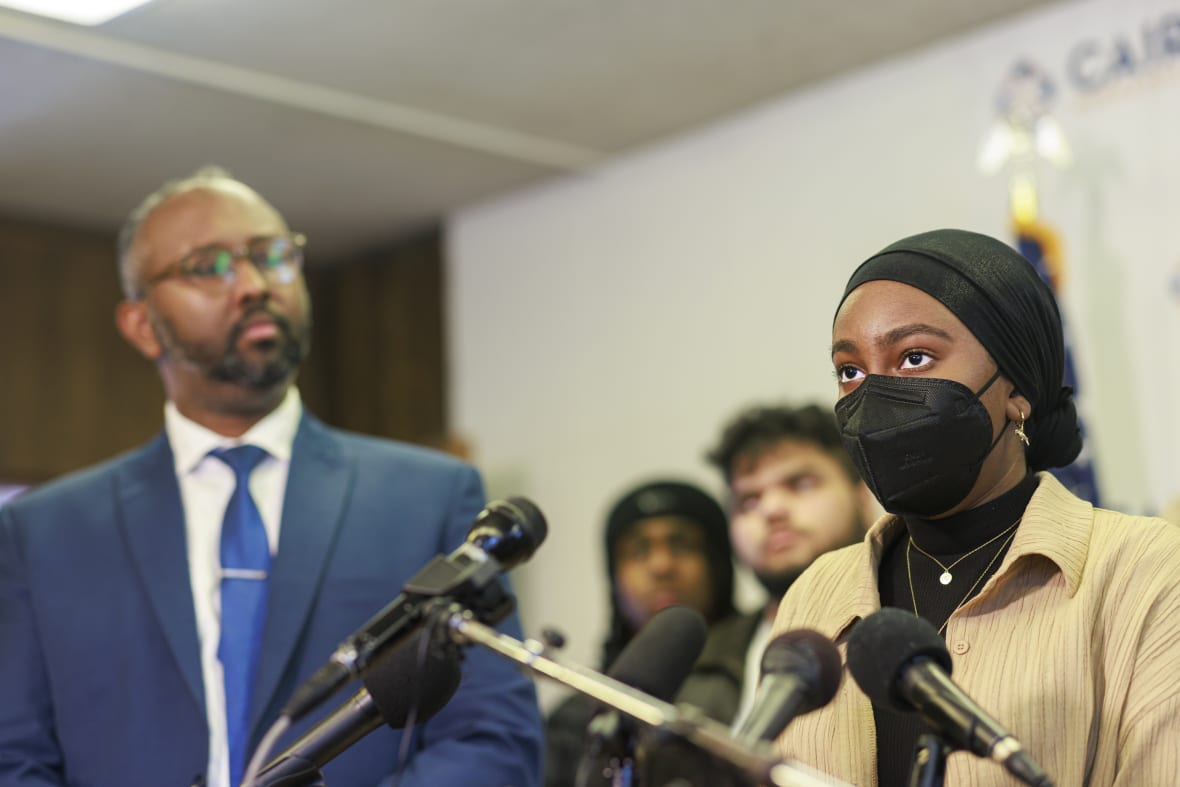Hamline University under fire for art professor’s dismissal
A Minnesota university’s decision to dismiss a professor for including depictions of the Prophet Muhammad in a world art course The post Hamline University under fire for art professor’s dismissal appeared first on TheGrio.

For many Muslims, visual depictions of the Prophet Muhammad violate their faith.
A Minnesota university’s decision to dismiss a professor for including depictions of the Prophet Muhammad in a world art course has put the small, private school at the center of a debate over how to include controversial material in college courses while respecting students’ personal relationship to the material.
Months after the images were shown in an online class, the chair of Hamline University’s Board of Trustees said Friday that the trustees were reviewing the university’s policies and its responses to both student complaints and faculty concerns about academic freedom. Also Friday, a national civil rights organization for Muslims rebuked accusations that the professor’s behavior was Islamophobic.

The conflict began in October when adjunct professor Erika López Prater included a 14th-century painting depicting the Prophet Muhammad in a lesson on Islamic art, prompting a Muslim student in the class to complain to the university, according to media reports and advocacy groups that have backed either the professor or student.
López Prater was aware that for many Muslims, visual depictions of the Prophet Muhammad violate their faith. A course syllabus she has shown in media interviews noted that students would view images of religious figures, including the Prophet Muhammad. The syllabus also included an offer to work with students uncomfortable with viewing those images.
She also warned the class immediately before showing the depiction of the Prophet Muhammad. Her goal, López Prater said this week, was to teach students about the “rich diversity” of attitudes toward such imagery.
“It’s critically important that we acknowledge the internal diversity within Islam and that we also respect the keen, curious minds that come from that community and other groups and that we don’t only accommodate the safest options available,” she said in a video interview with Muqtedar Khan, a professor of international relations at the University of Delaware. “Institutions of higher learning … we owe it to our students to challenge them in ways that are sometimes uncomfortable.”
López Prater said she and her department chair began talking in September about her teaching a new course, but after the incident the chair told her that “her services were no longer needed.”
Hamline’s president has said the professor’s contract was not renewed following the fall semester.
Beyond Hamline’s campus in Saint Paul, Minnesota, Muslims disagree about the incident and broader academic use of depictions of the Prophet Muhammad.
Jaylani Hussein, executive director of the Minnesota chapter of the Council on American-Islamic Relations, was among the earliest supporters of Hamline’s response. He said the image’s inclusion in the lesson was disrespectful to Muslim students.
“That’s a big part of why this hurt” the student who complained, he said.
At a news conference organized by the group, the student whose complaint sparked the university’s review said Wednesday that she and other Muslim students feel administrators acted appropriately. Aram Wedatalla told reporters that she had never seen a depiction of the Prophet Muhammad until the October class.

“It just breaks my heart that I have to stand here to tell people that something is Islamophobic and something actually hurts all of us, not only me,” she said.
The national Council on American-Islamic Relations on Friday, though, distanced itself from claims that López Prater’s approach was Islamophobic. CAIR, which describes itself as the largest civil rights organization for Muslims in the U.S., said intent, actions and circumstance all matter.
“Although we strongly discourage showing visual depictions of the Prophet, we recognize that professors who analyze ancient paintings for an academic purpose are not the same as Islamophobes who show such images to cause offense,” the organization said. “Based on what we know up to this point, we see no evidence that Professor Erika López Prater acted with Islamophobic intent or engaged in conduct that meets our definition of Islamophobia.”
Pushback to Hamline’s decision began with an online petition from a University of Michigan Islamic art scholar who said the painting is frequently shown and studied by art historians and grew as media reports detailed the university’s response, including one official’s email to employees describing the incident as Islamophobic.
Critics included Muslim Public Affairs Council and the Middle East Studies Association, which both issued statements praising the professor for her sensitivity and commitment to teaching the variety of attitudes toward depictions of the Prophet Muhammad in Islam’s history. Islamic art experts also have noted that the image was nothing like the cartoons in the satirical French newspaper Charlie Hebdo that led to a deadly 2015 attack.
Those urging Hamline to reinstate López Prater include PEN America, the American Association of University Professors, as well as a former president of the university.
“Generations of Hamline faculty have taught with the belief that adhering to the bright line of academic freedom and supporting students are not mutually exclusive,” Linda Hanson, who was Hamline’s president from 2005-2015, wrote in a letter published late Wednesday by the Minneapolis Star Tribune.
University President Fayneese Miller staunchly defended the school’s response, including a lengthy letter released Wednesday that said Hamline has been “under attack from forces outside our campus.”
“Prioritizing the well-being of our students does not in any way negate or minimize the rights and privileges assured by academic freedom,” Miller wrote. “But the concepts do intersect.”
Students also have rights that administrators must protect, she wrote, before citing the university’s ties to the United Methodist Church.
“To do all the good you can means, in part, minimizing harm,” Miller said. “That is what has informed our decisions thus far and will continue to inform them in the future.”
But a statement released Friday by Board of Trustees Chair Ellen Watters gave more credence to the school’s critics, and promised that trustees “are listening and we are learning.”
“The Hamline University Board of Trustees is actively involved in reviewing the University’s policies and responses to recent student concerns and subsequent faculty concerns about academic freedom,” Watters wrote. “Upholding academic freedom and fostering an inclusive, respectful learning environment for our students are both required to fulfill our Mission.”
The statement did not provide more detail on the board’s process and a school spokesman did not immediately respond to messages seeking information.
TheGrio is FREE on your TV via Apple TV, Amazon Fire, Roku and Android TV. Also, please download theGrio mobile apps today!
The post Hamline University under fire for art professor’s dismissal appeared first on TheGrio.












